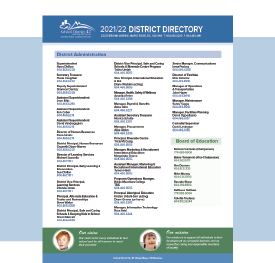Will a student miss or repeat curriculum material?
In today’s classrooms, the focus has shifted away from memorizing facts and learning content knowledge. Instead, there is an increased emphasis on the development of skills and understanding concepts and processes, in addition to developing the attitudes and mindset of a lifelong learner. With rapid changes in science and technology, it is essential students learn how to access information, evaluate ideas, make judgments, collaborate with others, and transfer knowledge in novel ways.
Teachers of combined classes create learning engagements that meet the needs of all learners, often incorporating learning outcomes from both grades into holistic, theme-based units of study. The Universal Design for Learning (UDL) framework helps teachers design curriculum to meet individual student needs while recognizing student strengths. Using this framework helps all teachers, whether straight grade or combined, succeed in creating an inclusive and equitable learning environment.
How can families support their children?
Regardless of their child’s class placement, families are encouraged to stay positive and interested in their child’s learning. Families can demonstrate support by encouraging open-mindedness, risk-taking, and principled learning. Families are also encouraged to monitor schoolwork and to communicate openly with the teacher around their child’s strengths, stretches, and learning goals.
Why do we use the term ‘combined’?
Combined grade classrooms have many names including split grades, multi-age, family grouping, etc. The term split grade sometimes becomes negatively associated with teachers splitting their time and attention between two distinct groups. The term combined class reflects a more holistic approach to learning that emphasizes whole group instruction, as well as opportunities for flexible groupings to meet students’ learning styles and needs.
How will being in a combined class impact my child?
Studies have shown that academic achievement is not impacted by being in a combined class versus a straight-grade class. In other words, there is no academic detriment to combined grade groupings. In fact, many studies have concluded there are social emotional benefits for students in combined classes, including greater leadership skills, increased self-esteem, increased social responsibility, and more positive peer interactions.
How will combined classes benefit my child?
Just like in life, there are often combined classes in high school, especially for electives. Giving children the opportunity to have different experiences in elementary school does what school is designed to do — prepare students for real life.

